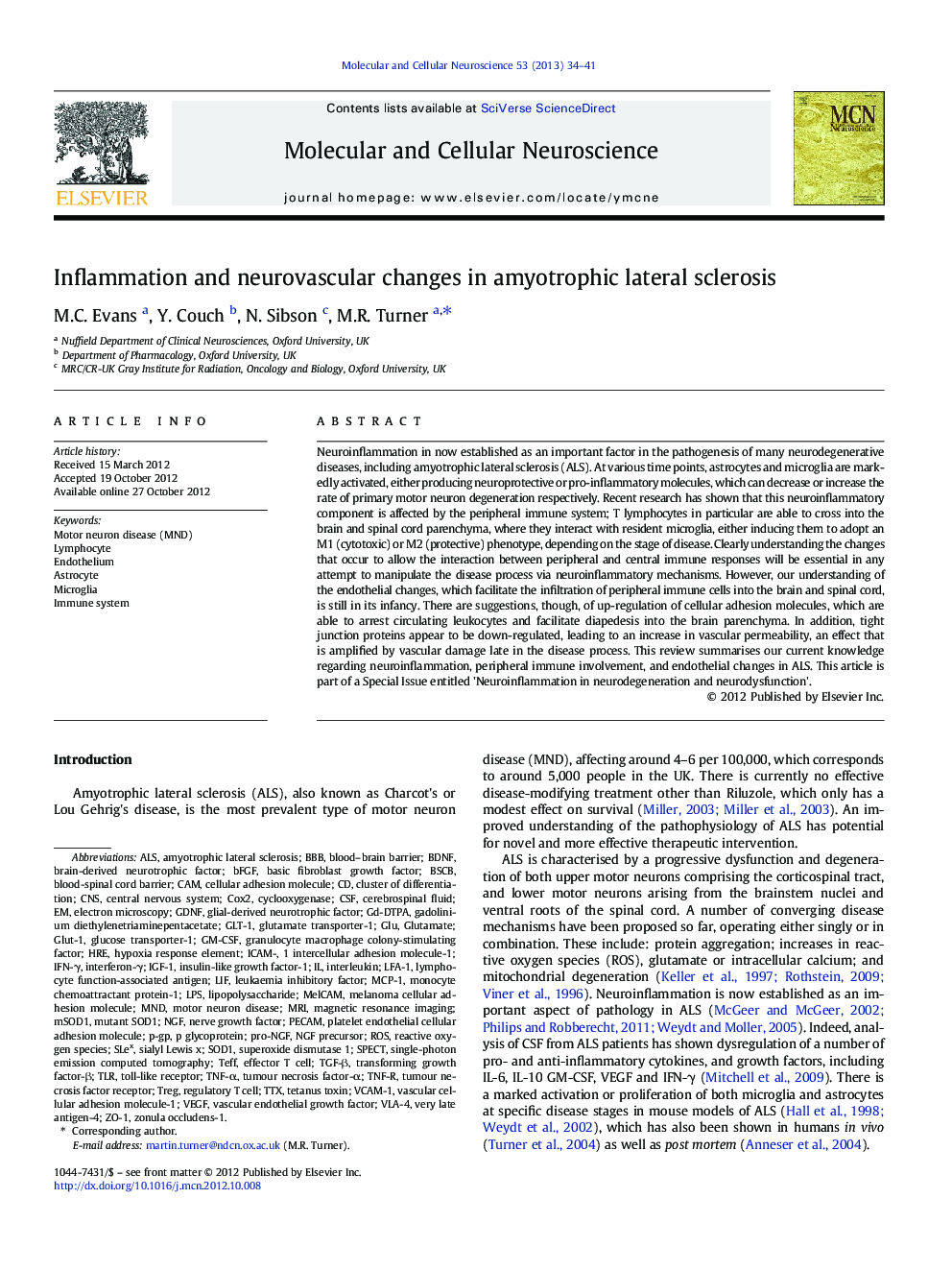| Article ID | Journal | Published Year | Pages | File Type |
|---|---|---|---|---|
| 2198554 | Molecular and Cellular Neuroscience | 2013 | 8 Pages |
Neuroinflammation in now established as an important factor in the pathogenesis of many neurodegenerative diseases, including amyotrophic lateral sclerosis (ALS). At various time points, astrocytes and microglia are markedly activated, either producing neuroprotective or pro-inflammatory molecules, which can decrease or increase the rate of primary motor neuron degeneration respectively. Recent research has shown that this neuroinflammatory component is affected by the peripheral immune system; T lymphocytes in particular are able to cross into the brain and spinal cord parenchyma, where they interact with resident microglia, either inducing them to adopt an M1 (cytotoxic) or M2 (protective) phenotype, depending on the stage of disease. Clearly understanding the changes that occur to allow the interaction between peripheral and central immune responses will be essential in any attempt to manipulate the disease process via neuroinflammatory mechanisms. However, our understanding of the endothelial changes, which facilitate the infiltration of peripheral immune cells into the brain and spinal cord, is still in its infancy. There are suggestions, though, of up-regulation of cellular adhesion molecules, which are able to arrest circulating leukocytes and facilitate diapedesis into the brain parenchyma. In addition, tight junction proteins appear to be down-regulated, leading to an increase in vascular permeability, an effect that is amplified by vascular damage late in the disease process. This review summarises our current knowledge regarding neuroinflammation, peripheral immune involvement, and endothelial changes in ALS. This article is part of a Special Issue entitled 'Neuroinflammation in neurodegeneration and neurodysfunction'.
